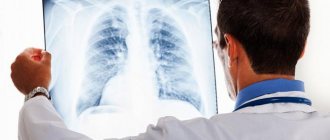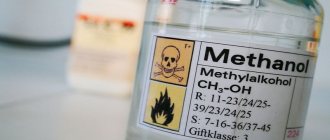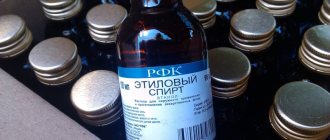Poisons
The classification of poisons and poisoning by them is quite complex. More than 5,000 different toxic substances are known that have a toxic effect on humans. More than 700 species of plants that can lead to acute poisoning in humans and more than 5,000 species of animals and insects, the poisonous bites of which can be fatal, have been studied.
For this reason, it is quite difficult to carry out a structured and clear classification of poisons. Conventionally, they are divided into separate categories depending on:
- ways of possible poisoning of a person;
- measures of their toxic effects on the body;
- clinical and morphological principles of poisoning;
- chemical properties;
- scope of their application.
General and special principle of classification
According to the general principle, all poisons are classified as follows:
- by chemical properties;
- according to the purposes of its practical application.
Pesticides
The second type includes:
- pesticides;
- household chemicals;
- animal and biological-plant poisons;
- medications;
- pesticide;
- substances used as toxic weapons;
- industrial poisons (fuel, freon, methanol).
According to a special principle, poisons are classified as follows:
- by their mode of action with enzyme systems;
- according to the type of hypoxia, the development of which they provoke due to intoxication;
- by the strength of carcinogenic activity;
- based on the results of the biological consequences of the poisoning they caused.
Additional preventative measures
To reduce the negative impact of industrial poisons, which often cause various dangerous diseases, a number of measures are taken:
- Automate and mechanize hazardous production.
- They seal equipment and certain communications that are a source of industrial poisons.
- Equipping industrial premises with modern and efficient ventilation systems.
- Blocking alarms are installed at hazardous facilities.
- Provide workers with modern personal protective equipment.
- Carry out other preventive measures that are aimed at preventing cases of poisoning.
People who work in hazardous industries must undergo a medical examination once a year. In addition, workers are given milk at the rate of 0.5 liters per work shift because it is harmful.
Hygienic standards are established based on the following rules:
- Toxicological studies are carried out, preventive measures are carried out, while introducing innovative technological processes. The inclusion of any equipment, as well as new chemical components, into the production process should take place without haste.
- Conduct a general analysis of workplace morbidity cases and compare the data obtained with the indicators of previous standards.
- Determine the limit of the harmful effect of a particular chemical component on the human body.
Classification according to possible methods of poisoning
There are several known ways through which a person is poisoned by poisons:
- Inhalation – through the respiratory system. Intoxication occurs as a result of gaseous and volatile substances entering the lungs. You can be poisoned in this way by gasoline vapors, carbon monoxide, and ether.
- Oral – occurs by ingestion. The poison penetrates the body through the mucous membrane of the mouth and stomach (fat-soluble substances), and is absorbed by the intestinal mucosa (water-soluble substances). In this way, poisoning occurs with food mushrooms, organic acids, medications, and ethyl alcohol.
- Injection - the poison enters the body through subcutaneous, intramuscular and intravenous administration (the latter method is characterized by the fastest damage to the body, since the toxin immediately enters the general bloodstream).
- Percutaneous - the poison is absorbed into the body through the human skin. In this way, poisoning with vapors of mercury, iodine, and chlorinated hydrocarbons can occur.
- Penetration through the mucous membrane of the conjunctiva - fat- and water-soluble substances can enter the body in this way.
- The introduction of poison into the body cavity is a method of poisoning when toxic compounds are introduced into the vagina, rectum, and ear canal.
Industrial poisoning
Based on the conditions under which the poisoning occurred, it is classified as either accidental or intentional. In the first case, we are talking about industrial poisonings (which occurred while a person was performing his professional duties) and household poisonings (unauthorized prescription and use of medications, accidental drug overdose, alcohol intoxication, etc.). In the second case, they mean suicide (special use of poison) or criminal actions (deliberate poisoning of a person).
Hygienic characteristics
Industrial poisons differ in different physical characteristics, including boiling point, volatility and vapor density. All these properties determine the behavior of chemical elements in different environmental conditions, and also become a decisive factor in the organization of normal working conditions. There are several patterns of the possible effect of toxic substances on the human body.
The severity of the toxic effect of toxic substances depends on their physical state and the routes through which they can enter the body. In industrial conditions, poisons can be in various phases - gas, vapor, various liquids, aerosol substances, solid components, as well as various mixtures. They enter the human body through the respiratory organs, digestive tract, skin, and sometimes through the membrane of the eyes.
Very often, toxic effects are produced by vapors, aerosols, gases and other elements that are characterized by increased volatility. This is explained by the significant volume of air that passes through the lung tissue, especially if the work involves physical activity. Under such conditions, poisons almost instantly enter the bloodstream and spread to all organs.
The second most important and frequent route of intoxication is the oral route. This can be explained by the fact that the poisons that are in the air of industrial premises dissolve in saliva and begin to be absorbed in the mouth, after which the absorption of toxic components continues in the stomach and then in the intestines.
Industrial poisons enter the digestive organs if occupational hygiene is poor. In this case, toxins enter the stomach along with water or food.
There are compounds that penetrate into the body through the skin; they are characterized by excellent solubility in various fats, which allows them to pass through the epidermis layer . At the same time, good solubility in water helps them penetrate the bloodstream and spread to all organs. Such substances include benzene and similar compounds, certain pesticides, nitro compounds, organometallic and chlorinated compounds.
Effect on the human body
In medical and forensic practice, the classification of poisons is carried out taking into account their effect on the human body. Functional types of poisons are divided into 3 categories:
- General-functional - systemically affect all functions of the body, while leaving no traces or morphological changes on the organs. Can lead to death. Chlorophos, hydrocyanic acid, morphine, phenatine, and atropine have a similar effect.
- Cerebrospinal – cause excessive physical and mental activity, increase blood pressure levels. May provoke delirium and hallucinations. This type includes narcotic substances, ethyl alcohol and its surrogates, barbiturates.
- Cardiovascular – affects the central nervous system and cardiovascular system. These include nicotine and atropine.
Among all three types, there are hemolytic and hemoglobinotropic (“blood poisons”), the peculiarity of which is the ability to form strong bonds with hemoglobin.
These types include poisoning by toadstool, various nitrites and nitrates, as well as poisonous snake bites.
Industrial poisons. Life safety. Lecture course
6.1. Classification of chemicals
6.2. Rationing of harmful chemicals
6.3. Effect on the body
6.4. Methods and means of protection
Poisons are substances that, when entering the body in small quantities, enter into a chemical or physico-chemical interaction with tissues and, under certain conditions, cause health problems.
Although almost all substances can exhibit toxic properties, even such as table salt in large doses or oxygen at elevated pressure, only those that exhibit their harmful effects under normal conditions and in relatively small quantities are classified as poisons.
Production (industrial) poisons are those that affect a person in working conditions and cause deterioration in performance or health problems - occupational or industrial poisoning.
Household poisons are substances that affect humans in everyday life. These are substances contained in household chemicals and cosmetics.
Sources of release of chemicals in various industries can be leaky equipment, insufficiently mechanized (automated) operations for loading raw materials and unloading finished products, and repair work. Chemicals can enter production premises through supply ventilation systems in cases where the atmospheric air is contaminated with chemical products that are emissions from this production.
Direct sources of release of chemicals during poor storage can be preparatory operations: grinding and sifting of materials, transportation of raw materials, pickling, drying.
At communications enterprises during installation, setup, and operation, the following substances and compounds may pose a danger: sealing wax, stamp ink, kerosene, gasoline, alcohol; acids: sulfuric, hydrochloric, boric, alkalis, lead, tin, fluxes, hydrogen, centabic (instead of bleach), antiseptics (uralite, triolite, sodium fluoride, creosote and anthracene oil) for impregnation of poles and supports, exhaust gases in generator and diesel engines .
6.1. Classification of chemicals
- Based on their chemical structure, substances can be divided into the following groups:
- organic compounds (aldehydes, alcohols, ketones);
- elemental organic compounds (organophosphorus, organochlorine);
- inorganic (lead, mercury).
- According to their state of aggregation, chemical substances are divided into gases, vapors, aerosols and their mixtures.
- Based on their effect on the human body, chemical substances are divided into:
a) toxic – interacting with the human body, causing various deviations in the worker’s health.
Conventionally, according to their physiological effects on humans, toxic substances can be divided into four groups:
- irritants – affecting the respiratory tract and mucous membrane of the eyes (sulfur dioxide, chlorine, ammonia, hydrogen fluoride and chloride, formaldehyde, nitrogen oxides).
- asphyxiating – disrupting the process of oxygen absorption by tissues: carbon monoxide, chlorine, hydrogen sulfide, etc.
- narcotics - nitrogen under pressure, trichlorethylene, benzyl, dichloroethane, acitylene, acetone, phenol, carbon tetrachloride.
- somatic – causing disruption of the body or its individual systems: lead, mercury, benzene, arsenic and its compounds, methyl alcohol.
b) sensitizing – causing neuroendocrine disorders, accompanied by nested baldness and skin depigmentation.
c) carcinogenic – causing the growth of cancer cells (from the Greek “cancero” - crab, cancerous tumors were represented in the form of a crab).
d) generative :
- gonadotropic (acting on the genital area);
- embryotropic (acting on embryos);
- mutagenic (acting on heredity).
e) allergens – causing various allergic reactions.
- According to the degree of danger to the human body, all chemicals are divided into 4 hazard classes (GOST 12.1.007-76):
Class 1 – extremely dangerous;
Class 2 – highly dangerous;
Class 3 – moderately dangerous;
Class 4 – low-hazard.
6.2. Rationing of harmful chemicals
For the air in the working area of industrial premises, maximum permissible concentrations (MAC) of harmful substances, aerosols and dust, which represent the mass of harmful substances contained in 1 m3 of air (mg/m3), are established.
MPC is a concentration that, during daily work for 8 hours (40 hours per week) during the entire working experience, cannot cause diseases or deviations in the state of health, detected by modern methods of medical research, during work or in certain periods of life of the present and subsequent ones generations. (GOST 12.1.005-76).
6.3. Effect on the body
The harmful effects of chemical factors are evidenced, first of all, by changes that appear in the human body.
Criteria indicating the harmful effects of industrial environmental factors:
- A health problem or pathology of the organs most vulnerable to a given poison.
- An increase in the number of people with deviations from the norm.
- Increasing changes with increasing work experience.
- Reproducibility of deviations during repeated studies.
The effect of poisons can be general or local. The general effect develops as a result of the absorption of poisons into the blood. In this case, relative selectivity is often observed, which is expressed in the fact that certain organs and systems are predominantly affected, for example, the nervous system in case of manganese poisoning, the hematopoietic organs in case of benzene poisoning.
With local action, tissue damage predominates at the site of contact with the poison: the phenomenon of irritation, inflammation, burns of the skin and mucous membranes - most often upon contact with alkaline and acidic solutions and vapors.
Local action, as a rule, is accompanied by general phenomena due to the absorption of tissue decay products and reflex reactions as a result of irritation of nerve endings.
Industrial poisoning occurs in acute, subacute and chronic forms. Acute poisonings often occur in groups and occur in cases of accidents. These poisonings are characterized by:
1) short duration of action of the poison - no more than during one shift;
2) the entry of poison into the body in relatively large quantities - at high concentrations in the air, erroneous ingestion, severe contamination of the skin;
3) vivid clinical manifestations immediately at the moment of action of the poison or after a relatively short – usually several hours – hidden (latent) period.
In the development of acute poisoning, as a rule, there are two phases: the first - nonspecific manifestations (headache, weakness, nausea) and the second - specific (for example, pulmonary edema due to nitrogen oxide poisoning).
Chronic poisoning occurs gradually, with prolonged exposure to poisons that penetrate the body in relatively small quantities. They develop as a result of the accumulation of the poison itself in the body or the changes it causes.
The affected organs and systems in the body during chronic and acute poisoning with the same poison may differ.
For example, in acute benzene poisoning, the nervous system is mainly affected and a narcotic effect is observed; in chronic poisoning, the hematopoietic system is affected.
Along with acute and chronic poisoning, subacute forms are distinguished, which, although similar in terms of the conditions of occurrence and manifestation with acute poisoning, develop more slowly and have a more protracted course.
Industrial poisons can cause not only specific, acute, subacute and chronic poisoning, but also other negative consequences.
They can reduce the body’s immunobiological resistance and contribute to the development of diseases such as catarrh of the upper respiratory tract, tuberculosis, kidney disease, cardiovascular disease, AIDS, etc.
There are industrial poisons that cause allergic diseases (bronchial asthma, eczema, etc.) and a number of individual consequences. For example, some poisons affect the generative function, affecting the gonads, having an embryotoxic effect, causing the development of deformities.
Among the poisons there are also those that promote the development of tumors - the so-called carcinogens, which include aromatic amines, polycyclic carbohydrates, in particular benzopyrene.
The body's reaction to poison depends on:
- Gender, age, individual sensitivity;
- Chemical structure and physical properties of the poison; the amount of the substance ingested, the duration and continuity of its supply;
- Environment – noise, vibration, temperature, relative humidity, dust.
The body of adolescents is characterized by a high level of all oxidative and metabolic processes with incomplete development of protective and adaptive mechanisms. This leads to the fact that the ability to disinfect chemicals in adolescents is significantly reduced, and sensitivity to them is 3-4 times higher than in adults.
Even when exposed to chemical products in concentrations below permissible values, adolescents experience adverse reactions of a nonspecific nature: decreased immunobiological reactivity, anemia, functional disorders of the nervous and cardiovascular systems, allergic reactions.
6.4. Methods and means of protection
Protective measures are necessary to prevent chemical poisoning and optimize microclimate parameters. They can be divided into the following groups:
- medical examinations upon hiring and periodically (order No. 700 of the Russian Ministry of Health);
- half-holiday;
- prohibition of hiring teenagers and women in hazardous conditions;
- provision of additional leaves;
- accounting and registration of occupational diseases and poisonings;
- organization of rational additional nutrition.
- equipment sealing;
- remote or automatic control;
- ventilation and air conditioning;
- signaling.
- standardization of harmful substances in the air of the working area:
- standardization of raw materials and finished materials;
- air condition monitoring.
- rest rooms;
- availability of information;
- trainings;
- normalization of the socio-psychophysiological climate in the team.
Along with protective measures, protective equipment is also used (overall clothing, pastes, ointments, gloves, respiratory protection).
Source: https://siblec.ru/obshchestvennye-nauki/bezopasnost-zhiznedeyatelnosti/6-proizvodstvennye-yady
Selective toxicity
Arsenic
In addition to “blood” poisons, other types are also isolated, depending on their selective toxicity. In this case, the classification is carried out based on which organs the poison affects:
- “gastrointestinal” poisons (alkalis, arsenic, strong acids);
- “cardiac” (potassium and barium salts, cardiac glycosides);
- “hepatic” (ethyl alcohol, carbon monoxide, organophosphorus compounds);
- “nervous” (tranquilizers, analgesics, sleeping pills);
- “renal” (toxins of poisonous mushrooms, phenols, chlorinated hydrocarbons).
Diagnostics for exogenous intoxication
One of the most difficult cases in medical practice is poisoning with an unknown poison. It can manifest itself with symptoms that are characteristic of many types of poison.
If it is not truly known what provoked the state of poisoning, urgent specially targeted diagnostics are required.
Symptoms of poisoning
If a person is conscious, the following symptoms may cause suspicion of poisoning:
- dehydration;
- urination too often or completely absent;
- complaints of pain in various parts of the body and organs;
- gastrointestinal disorder;
- hallucinations, severe agitation or, conversely, complete apathy, depression;
- heart rhythm disturbance;
- external and internal bleeding;
- visual or hearing impairment;
- too pale skin or, conversely, intense redness;
- various skin rashes.
Symptoms characteristic of certain poisons that are similar in physical and chemical properties
Signs of poisoning
The degree of damage and influence on the functioning of certain body systems or individual organs makes it possible to make assumptions about which physicochemical group the poison that provoked the poisoning belongs to:
- Impaired mental activity, coma, agitation, stupor, and signs of encephalopathy indicate that poisoning occurred with poisons that affect the central nervous system. An overdose of psychotropic drugs (narcotics, barbiturates) can be assumed.
- Disturbances in the functioning of the respiratory system, manifested by spasms, inability to breathe deeply, and difficulty breathing. Such symptoms are observed if a person has inhaled a toxic substance or its vapor (carbon monoxide, gasoline). They are also characteristic of alkali acid intoxication.
- Disturbances in the functioning of the kidneys and liver are often the result of poisoning with heavy metal salts or acetic acid.
- Circulatory disorders and sudden changes in blood pressure. A decrease in pressure is observed with an overdose of barbiturates, and hypotension is also characteristic of carbon monoxide poisoning. Too high blood pressure may indicate an overdose of psychotropic drugs or narcotic drugs.
Instrumental methods
For accurate diagnosis of poisoning with an unknown poison in a hospital setting, the following instrumental methods are used:
- diagnosis of respiratory pathology, x-ray of the lungs - allow you to determine the type of hypoxia;
- electrocardiography – assesses the degree of heart damage, helps to identify myocardial dystrophy and heart rhythm disturbances;
- electroencephalography – helps to identify changes in the bioelectrical activity of the brain;
- measurement of systemic hemodynamics - shows the level of vascular resistance, stroke volume of the heart, helps to assess the degree of heart damage;
- radioisotope diagnostics of the liver and kidneys - determines the level and nature of intoxication of these organs;
- fiberoscopy, ultrasound of the abdominal organs - determine the presence of damage to the gastrointestinal tract.










